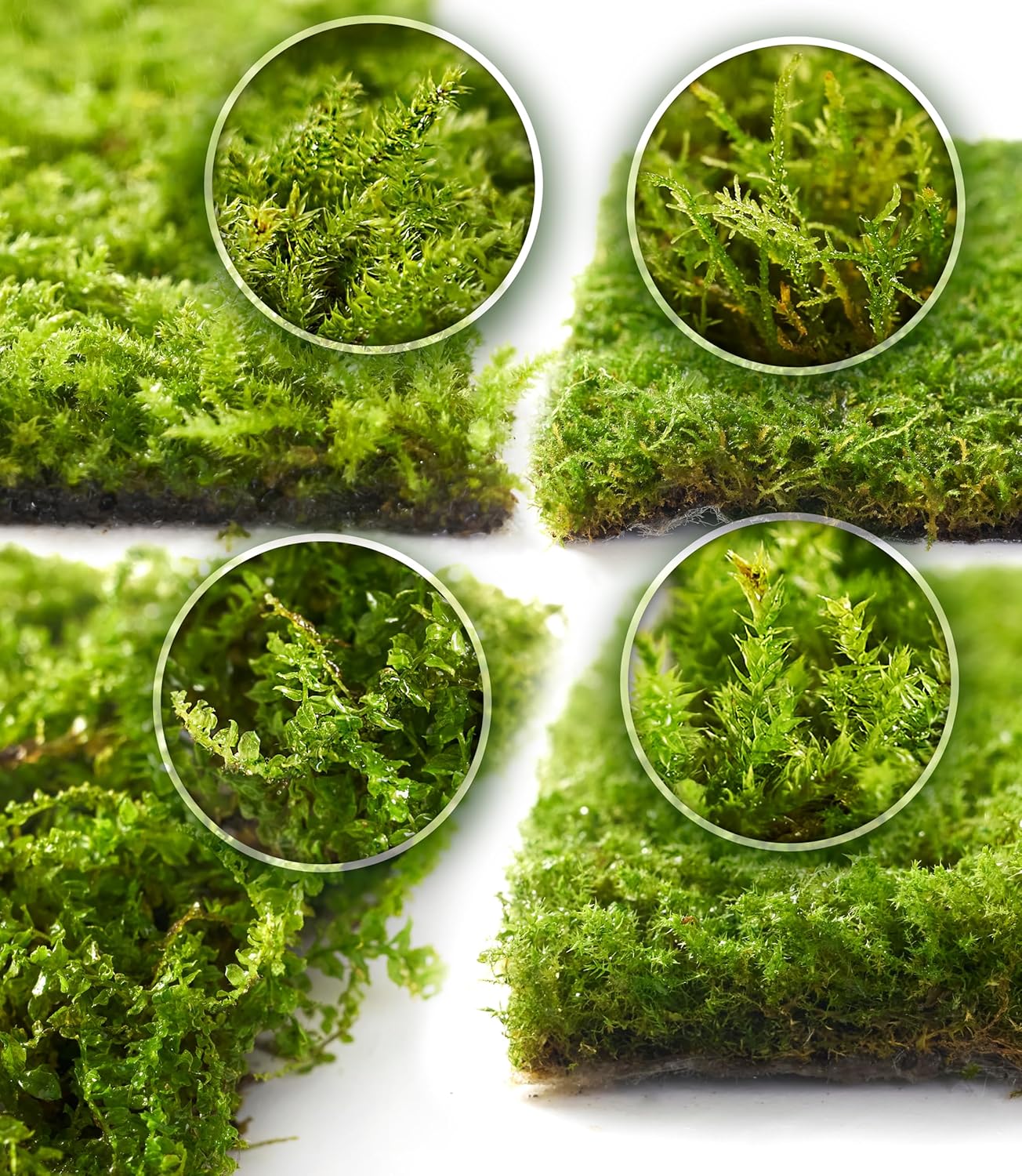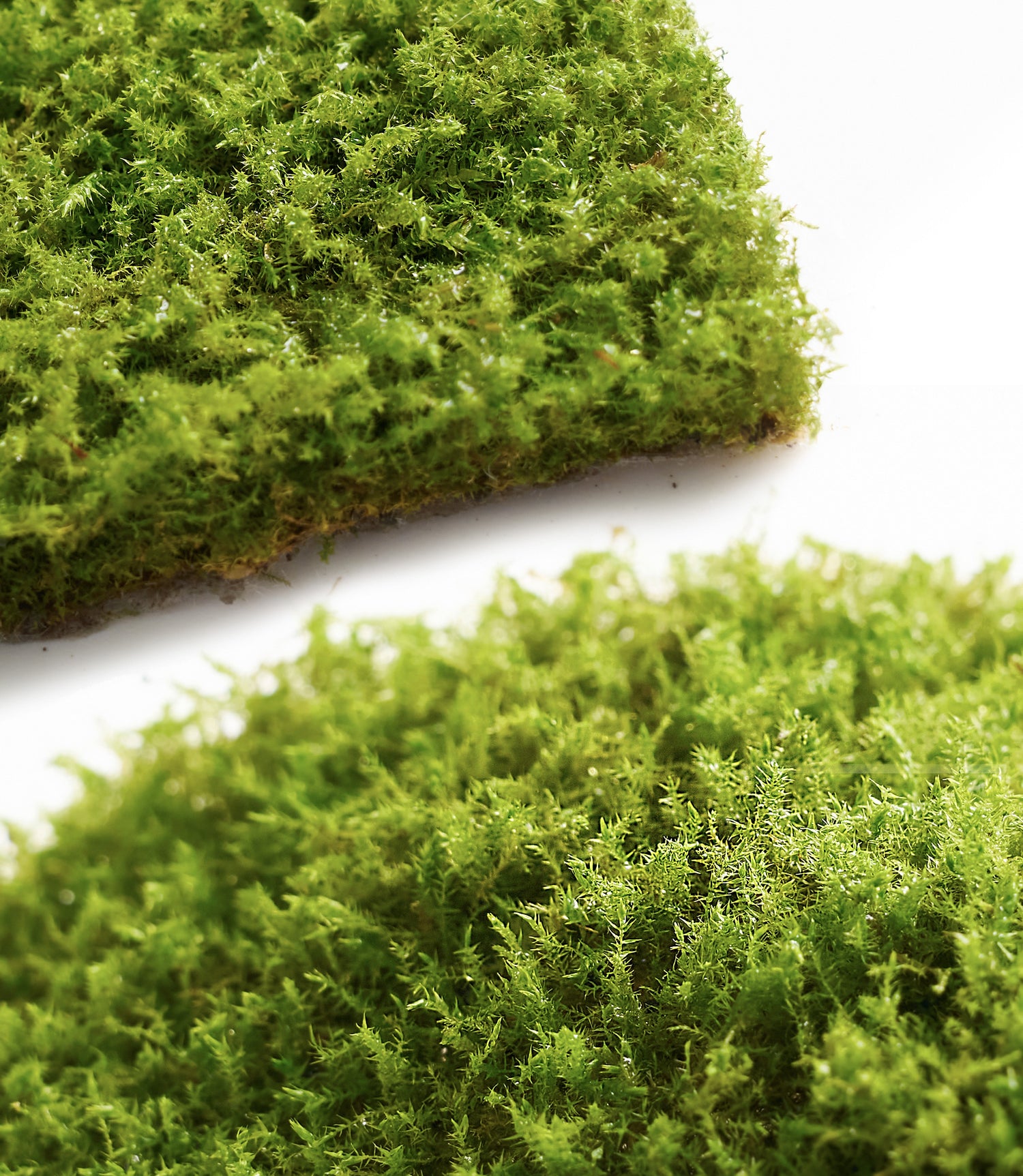Leucobryum glaucum: The Aesthetic Cushion Moss
Leucobryum glaucum: Aesthetic and ecological features of cushion moss
Introduction
Cushion Moss(Leucobryum glaucum) is a surface moss with unique visual expression and good ecological adaptability. It often grows in a spherical or hemispherical cushion shape. Due to its dense clustered morphology and silvery-white reflective properties, it is used in eco-bottle design, bonsai moss laying, and moss micro-landscape layout of oriental wabi-sabi aesthetics.
1. Morphological description
Plant morphology: spherical or hemispherical clumps, 5 to 12 cm in diameter.
Leaf color: light green to silver-gray green, slightly reflective when wet.
Leaf structure: densely spirally arranged, with milky white trichomes on the leaf surface.
Stem characteristics: the central stem is not obvious, the structure is tight, and the whole is a "pompom", which is the source of the name of cushion moss.
2. Ecological adaptability and native environment
Distribution range: northern temperate mountain forests, tundra wetlands, riverbank slopes, etc.
Humidity requirements: The optimum air humidity is 80-95%, and high humidity is the key to maintaining its morphology.
Temperature range: 50-77℉ (10-25℃) is the best, shade-tolerant but not dry-heat-tolerant, avoid strong wind drying.
Attachment medium: It is mostly attached to humus-rich soil layers, rock crevices or tundra surfaces, and is a living moss that is very suitable for terrarium and bonsai layouts.
III. Artificial cultivation management
1. Substrate recommendations
Recommended ratio: peat soil 50% + pine needle humus soil 30% + light sand 20%
pH value control: The appropriate pH value is 5.0-5.8; a small amount of activated carbon can be added for antibacterial and mildew prevention. Suitable for planting in closed terrarium.
2. Light and humidity control
Light intensity: low light, 200-600 Lux is recommended; avoid direct light sources.
Humidity adjustment: spray water once every 2-3 days, keep the leaves slightly wet, and avoid water accumulation.
3. Ventilation management
Closed environment management: short-term ventilation once every 48 hours to maintain air circulation.
Auxiliary measures for ventilation: It is recommended to use a bottle cap with micropores to assist microcirculation.
IV. Propagation and maintenance methods
Propagation method: mainly adopt the ball tearing method, tear the large ball into small pieces and stick them on the moist substrate surface.
Recovery cycle: Generally, it can be restored to a spherical structure in 3 to 5 weeks.
Maintenance suggestions: maintain a high humidity environment and avoid frequent movement or interference to avoid damage to the moss structure.
V. Gardening use and aesthetic expression
Terrarium focus moss: suitable as a visual anchor, it is an ideal moss for building high and low level structures.
Bonsai moss laying: can be matched with ceramic pots, sandstone, dwarf pine, etc. to create a sense of "tranquility".
Oriental wabi-sabi aesthetic symbol: commonly used in tea rooms, meditation corners and simple style moss landscapes, presenting static beauty.
VI. Summary
Cushion Moss(Leucobryum glaucum) is a moss variety with excellent sculptural and texture expression, suitable for use as the focus of eco-bottles, bonsai and to create a quiet space element. The Cushion Moss (live moss) we provide is not only full and soft in appearance, but also particularly suitable for use in humid, low-light indoor environments. It is an ideal moss material for making eco-bottles, bonsai and meditation spaces.






